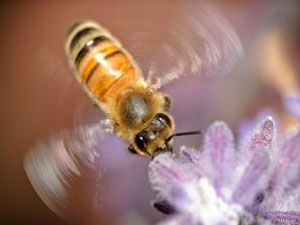《Nature》目录要览:2010-12-09出版
时间:2010-12-09 阅读: 我要评论:
Maximilian Eichberger et al.
doi:10.1038/nature09539
Abstract: http://www.nature.com/nature/journal/v468/n7325/abs/nature09539.html
Article: http://www.nature.com/nature/journal/v468/n7325/full/nature09539.html
Ice-sheet acceleration driven by melt supply variability pp803 - 806
Increased melting is often assumed to cause acceleration of ice sheets and glaciers through basal lubrication, possibly leading to increased rates of sea level rise. Now a physically-based model challenges this view, illustrating that above a critical threshold, increased melt will suppress the dynamic thinning process. Short-term spikes in water delivery, as from lake drainage or precipitation, still have the potential to generate spikes in velocity, but overall increases in melt do not appear likely to cause velocity increases.
Christian Schoof
doi:10.1038/nature09618
Abstract: http://www.nature.com/nature/journal/v468/n7325/abs/nature09618.html
Article: http://www.nature.com/nature/journal/v468/n7325/full/nature09618.html
Outer-core compositional stratification from observed core wave speed profiles pp807 - 810
George Helffrich and Satoshi Kaneshima
doi:10.1038/nature09636
Abstract: http://www.nature.com/nature/journal/v468/n7325/abs/nature09636.html
Article: http://www.nature.com/nature/journal/v468/n7325/full/nature09636.html
Gene expression divergence recapitulates the developmental hourglass model pp811 - 814
For two hundred years, scientists have noticed that the appearance of embryos in related species converge in their appearance mid-way in development, diverging thereafter. But is this 'phylotypic stage' real, and how is it connected with the genetic basis of development? Here, a method linking the genes transcribed at various stages of development (the transcriptome) with the evolutionary history of those genes is used. Genes transcribed in the phylotypic stage are, in evolutionary terms, the oldest and most conserved. This suggests that the phylotypic stage does represent the body plans of related species at their most unadorned, selection having sculpted the earlier and later stages of embryonic form to suit the particulars of each creature.
Alex T. Kalinka et al.
doi:10.1038/nature09634
Abstract: http://www.nature.com/nature/journal/v468/n7325/abs/nature09634.html
Article: http://www.nature.com/nature/journal/v468/n7325/full/nature09634.html
A phylogenetically based transcriptome age index mirrors ontogenetic divergence patterns pp815 - 818
For two hundred years, scientists have noticed that the appearance of embryos in related species converge in their appearance mid-way in development, diverging thereafter. But is this 'phylotypic stage' real, and how is it connected with the genetic basis of development? This issue is looked at in microcosm, concentrating on gene expression during the development of six species of the fruitfly Drosophila. It is shown that the genes expressed during the phylotypic stage are more conserved across the genus, supporting the age-old model.
Tomislav Domazet-Lošo and Diethard Tautz
doi:10.1038/nature09632
Abstract: http://www.nature.com/nature/journal/v468/n7325/abs/nature09632.html
Article: http://www.nature.com/nature/journal/v468/n7325/full/nature09632.html
| 《Nature》目录要览 — 2011-04-28出版 |
| 《Nature》目录要览:2011-01-20出版 |
| 《Nature》目录要览:2010-12-23出版 |
| 《Nature》目录要览:2010-12-16出版 |
| 《Nature》目录要览:2010-12-09出版 |
| 《Nature》目录要览:2010-12-02出版 |
特别声明:本文转载仅仅是出于传播信息的需要,版权归原作者所有,并不意味着代表本网站观点或证实其内容的真实性; 如其他媒体、网站或个人从本网站转载使用,须保留本网站注明的“来源”,并自负版权等法律责任; 作者如果不希望被转载或者联系转载稿费等事宜,请与我们接洽:service#environmentor.cn(请将#改为@)。
来源:Nature 作者:Environmentor (环境人 Environmentor.Cn)





